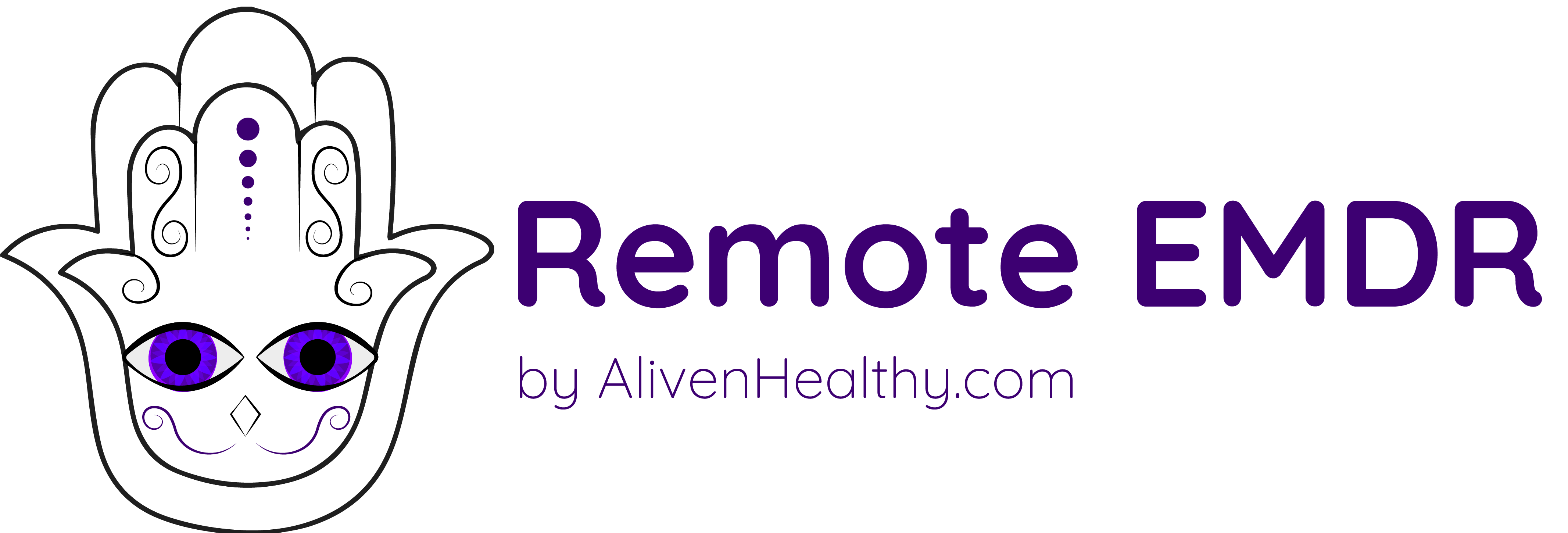How Trauma Causes Mental Illnesses Like Depression, Anxiety, Psychosis, and More…

Trauma is ubiquitous. Everyone experiences some form of trauma in their lives. But not everyone carries that trauma for long periods of time without releasing it. Some people are able to successfully release trauma while other people, for one reason or another, are not able to release it and move on with their lives.
The Connection Between Trauma and Illness
A number of well-respected doctors and scientists have noted the connection between trauma and cancer as well as the connection between trauma and diabetes. This mind-body connection may seem obscure or hard-to-believe at first glance, but in fact, it is well-established that cancer patients have generally experienced a powerful trauma that occurred within a relatively short period of time before they received their diagnosis. Click here to read more about the science of Ayahuasca as an herbal remedy for cancer and diabetes that works through the pancreas to release trauma. Ayahuasca is a powerful psychoactive medicine that not only heals the pancreas to regrow beta-cells that produce insulin, but that also can literally teach people how to heal themselves and others. Ayahuasca is one of the most important sacred medicines that release trauma. The release of trauma fostered by Ayahuasca is one of mechanisms of action through which this medicine can permanently cure mental illness as well as physical illness.
Trauma and Mental Illness
A plant like Ayahuasca, can teach all of us a great deal (literally) about how trauma lodges itself in the body and how it can be released. But this sacred plant medicine is used to treat everything from major depression to cancer and diabetes. This fact definitely challenges conventional medicine and the model of one pill for one disease. Ayahuasca may seem like a cure-all, but it’s not really that simple. Nonetheless, this herbal cure for trauma leads us directly to the pancreas as well as to the spleen and the stomach as organs in the body that are naturally inclined to store trauma. In other words, mental illness often originates as trauma that impacts the pancreas, spleen, or stomach.
The pancreas, spleen, and stomach are the organs that deal with trust and mistrust – our sense of safety in the world. Trauma can be defined as any incomplete action or interrupted action. For example, if you’ve ever started telling a story that you didn’t get to finish because the story got interrupted, you know how it feels to be left hanging. If you don’t get to complete your story because something interrupts it, you may have a lingering feeling of incompletion as a result. But in our lives, there are many actions that we might initiate, but then be unable to complete. Some of them may involve life-or-death situations or situations that involve a lot of pain or bodily harm.
Traditional Chinese Medicine for Trauma
In Traditional Chinese Medicine, the pancreas, spleen, and stomach are the organs in the body that deal with our sense of safety in the world – our ability to trust Mother Nature and other human beings. When trauma is stored in the body as an action or an emotion about an incomplete action, it creates ongoing issues with trust and mistrust. This incomplete action might develop into a looping set of thoughts and emotions that are known as a “flashback”. A flashback is triggered by something though most people never know or find out what their triggers were. This is why it’s important to use a system like EMDR or the Emotional Freedom Technique / EFT, which is based on acupuncture points to access trauma and release it regularly.
The word “flashback” is heavily associated with Post Traumatic Stress Disorder / PTSD, but in fact, depression, anxiety, mania, and even psychotic symptoms are triggered or set in motion by something that relates to the initial trauma that’s weighing down the autonomic nervous system. Trauma exists as a “felt sense” in the body, as an incomplete action from the past (or even sometimes from the future as an idea) wherein a person may feel emotionally as though the trauma is occurring right at that present moment even though there’s nothing wrong in the person’s environment. When you release trauma with online EMDR or any number of other types of trauma-informed therapies, you reduce your toxic-thought load by integrating negative memories and emotions from the past actions that are incomplete.
Click here to do a free trial of EMDR online.
What happens when trauma is NOT released?
When a stressful or traumatic event occurs and we aren’t able to release the physical reaction to this event from our bodies, it gets stuck in the autonomic nervous system. As an “incomplete action” or an action that, for one reason or another, we were not able to complete in the moment, this physical reaction is experienced as a strong emotion that is disconnected from and sometimes at odds with the reality of the present moment.
Let’s say, for example, that in the past as you were crossing the street, a person ahead of you was struck by a car. Right before it happened, you may have noticed the car driving too quickly toward the pedestrian walkway and a part of you may have wanted to lunge out and pull the person back. But maybe you were too far away from the person who was struck, or perhaps you held yourself back because you didn’t want to get hurt yourself. In any case, this movement – a lunge – that you wanted to make toward the person who was struck, can get stuck in the body and create a thought-loop known as a “flashback” that plays anytime something triggers the loop. The urge to take action may feel like fight-or-flight – a pounding heart, high blood pressure, or the desire to run away. Meanwhile, this fight-or-flight response may also be combined with the dark, complex emotions surrounding the event that you witnessed. A flashback can involve the emotions as well as the visceral fight-or flight response associated with the original trauma.
But let’s say that the thing that traumatized you involved a scheduled medical appointment that ended up being painful for some reason. Let’s say that this medical appointment went fine. There were no problems, but perhaps the anesthetic used for some procedure did not take hold and as a result, you experienced high levels of pain. Your body wanted to run away from the pain, but your mind may have chastised the body to stay put. You restrained yourself and if the medical procedure and the pain lasted long enough, instead of being in a fight-or-flight state, you may instead go into a “freeze” or “play dead” parasympathetic state. As a result, you have this trauma stored in the body as the complexity of emotions surrounding restraint and extreme physical pain, but your body may also go into a very depressed, almost dormant state of fatigue, nausea, and apathy, the play dead / freeze state, in response to a trigger.
Many people are familiar with Post-Traumatic Stress Disorder / PTSD and the problem of triggers and flashbacks, but far fewer people realize that depression, for example, is powerfully correlated with toxic thoughts and that these toxic thoughts are often triggered by something. Not very many people realize that depression can be “triggered” as a flashback to some situation that likely involved a sense of being incapacitated or paralyzed with fear, pain, anger, shock, or any number of factors. For example, a person who has a minor surgery as a child may actually develop trauma from the surgery if the anesthesia was not properly administered. This child may not have any conscious recollection of the surgery and yet unconsciously develop depression in response to being “triggered”. The trigger could be anything in the environment, something that someone says or does, an object, or even the time of year, that causes the depressed person to re-experience a sense of being totally incapable of saving themselves.
Most people carry trauma in one form or another unless they intentionally use something like EMDR to release it on a regular basis. A person who is age 30 and experiencing some form of mental illness may need intensive therapy working with EMDR to release a backlog of trauma. It can be valuable to take Mucuna pruriens for trauma and other supplements at the same time to enhance the process of releasing trauma. As trauma is released, mental illness is slowly healed at the same time. The autonomic nervous system begins to work properly again so that the person with the mental illness begins to connect more readily with reality and a sense of groundedness.
Trauma, Flashbacks, and Mental Illness
Yes. Trauma causes “flashbacks” that are sometimes very dramatic, but that often present more like mental chatter, paranoia, or toxic thoughts. If a person is overloaded with trauma, the mental chatter can turn into the experience of “hearing voices”. Trauma can cause paranoia and even hallucinations.
In fact, trauma is always “encoded” in the autonomic nervous system without the left-brain narrative memory that pairs with it. In other words, one of the hallmark features of a traumatic event is how it’s stored in the body and mind. Traumatic events cause us to store the experience in two different ways: somatic and narrative memory. The somatic experience of trauma is stored in the body – in the autonomic nervous system and the right brain – as as an emotional and “felt sense” experience. In contrast, the memory itself is stored in the mind as a logical and linear. If the right-brain and left-brain are not able to communicate with each other to pair the memory of an event with the emotions felt at the event, then it would technically qualify as trauma.
The left brain is logical and rule-oriented, but if it is not properly working with the right brain, it can become like a mental tyrant. Inner chatter turns toxic and people begin to experience feelings of extreme guilt and shame that contribute to psychosis, depression, anxiety, or bipolar disorder. This happens when traumatic memories being stored as a strictly emotional / symbolic experience are stored in the right brain without pairing to the corresponding linear memory of the same event in the left brain.
In the right brain, emotional / symbolic memories of traumatic events may be stored in an “encoded” non-logical fashion. The essential emotional content is represented, but the logical memory of the event is not. When the trauma loops in the right brain replay as flashbacks, people may feel depressed, anxious, or even psychotic. However, when the right brain material is finally connected to the left brain material to which it naturally matches, the trauma is “resolved” and released.
For a more detailed explanation of how trauma is stored and encoded in the body-mind, click here.
How Does EMDR Release Trauma?
EMDR releases trauma by helping the right brain communicate with the left brain on a specific topic. When you sit down to do a session of EMDR, you must take a moment to think about what troubles you and pull up that material to embody to the fullest extent possible. This moves the electrical activity in the brain to areas where trauma thought-loops occur. Then, as you begin to move your eyes back and forth and listen to the right-to-left auditory sounds, the right brain and left brain begin to communicate and try to match the emotional content of the traumatic memory with the linear details of what actually happened.
EMDR is the intentional and conscious exploitation of the natural mechanisms built into the human body, namely REM (Rapid Eye Movement) sleep. During REM sleep, our bodies naturally download the symbolic / emotional material in the right brain to the left brain using eye movements that are almost identical to the eye movements that we make during EMDR treatment.
EMDR works to release trauma that can cause anxiety, depression, bipolar disorder, panic disorders, psychosis, and more. For best results, you may need to do an EMDR private session with a practitioner who can help you target specific traumatic memories.
EMDR releases trauma by changing the position of the skull bones just slightly as a result of the eye muscles pulling on these floating bones. As the skull bones are pulled into a better position, they stop putting needless pressure on the cranial nerves that feed the autonomic nervous system. Releasing the pressure on these nerves helps ensure that the information about trauma from the autonomic nerves in the body are able to find their way to the left brain for processing and integration.
EMDR also works by ensuring that the symbolic right brain material can move to the logical left brain and back for processing. The movements of the eyes back and forth from right-to-left ensures that the targeted emotions or memories are processed by the brain in a manner similar to how our minds process material in the middle of the night during Rapid Eye Movement / REM sleep.
Click here to learn more about the DreamLight.app, a guided meditation and brain-entrainment tool.





